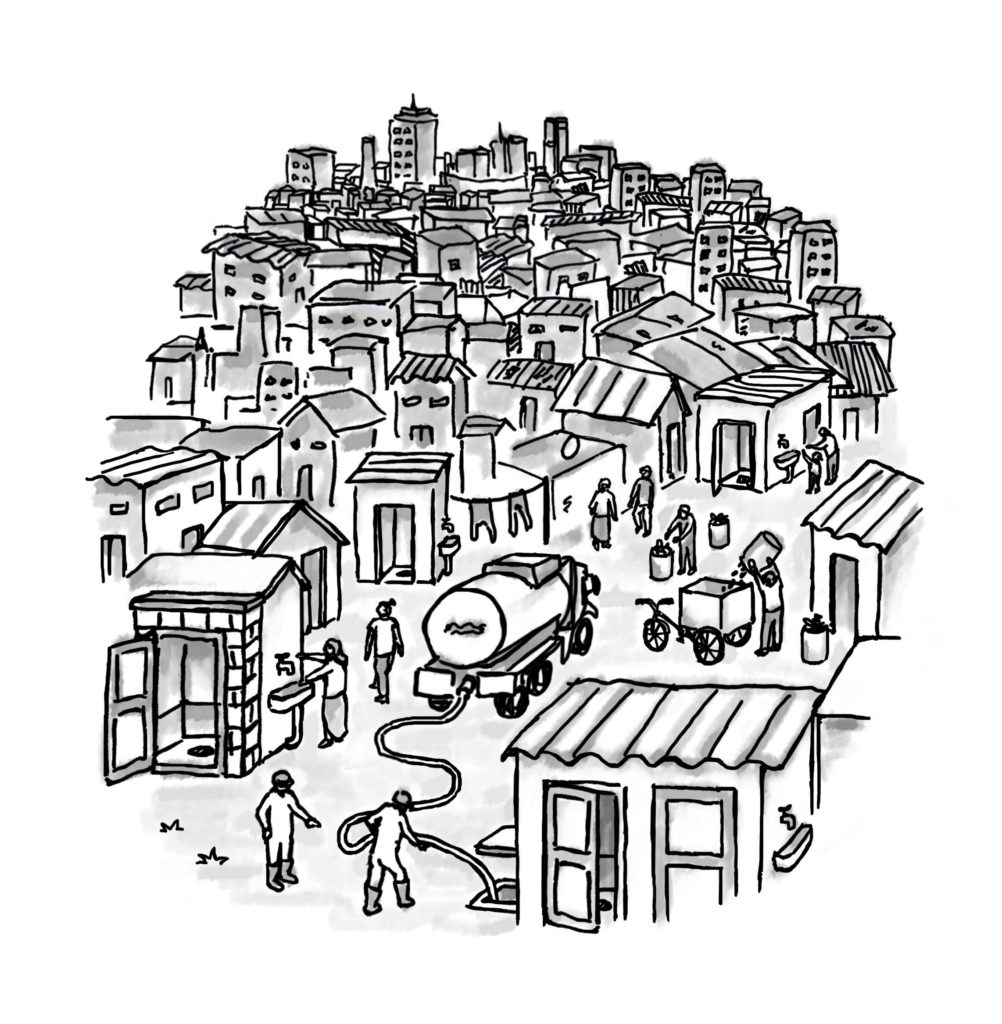Context analysis is the process of understanding the areas that sanitation and hygiene (S&H) programmes are being designed and delivered for. An in-depth and up-to-date context analysis is essential to determine the priority areas for a programme and ensure it is designed to achieve its aims in those areas.
Initial analysis should consider key S&H and development indicators across a range of areas to identify those to target and in which order. Once this has been determined, the analysis will typically move to a detailed assessment of the population, geography, institutions and actors, S&H history in those areas and other relevant topics so that appropriate intervention approaches can be selected and adapted to reach and support everyone across the target areas.
Context analysis is not just a one-off exercise undertaken at the beginning of a programme, but an essential ongoing learning element of adaptive programming, to enable evidence-based shifts and refinements. Context analyses draw on a range of primary and secondary sources of information.
Data from national, regional and other large-scale monitoring and information systems, surveys and reports are often a useful starting point and help focus subsequent inquiry. A good understanding of the national frameworks within which a programme will be run is also essential. More detailed data from the target areas will then be required.
Whilst some of this may be available from previous programmes or local partners, primary data collection may be required to supplement this. Investing early in a strong context analysis will support more effective and efficient delivery later on and allocation of adequate resources for this purpose is vital.
Good context analyses involve a range of stakeholders who bring different expertise and perspectives to the assessment. Including community members, particularly those from potentially disadvantaged groups, is important to ensure ground realities are understood and can be addressed. This is essential to make sure we leave no one behind in the drive to achieve SDG 6.2.
Involving programme staff at this stage can also help to ensure that operational constraints are considered in programme design and increase their buy in to new approaches.





